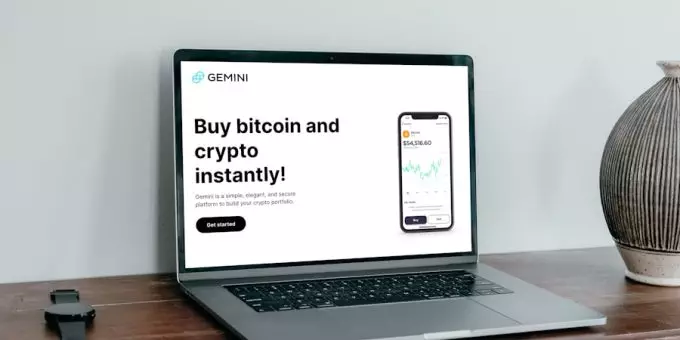
In today’s digital age, having a secure and fast payment solution is crucial for individuals and businesses alike. With the rise of cryptocurrencies, there has been a growing need for a reliable platform that allows users to make payments using digital assets. This is where Binance Pay comes in. Binance Pay is a new payment solution offered by Binance, one of the world’s largest cryptocurrency exchanges. It allows users to make payments using various cryptocurrencies, providing a convenient and secure way to transact.
How Binance Pay Works: Understanding the Technicalities
Binance Pay works by leveraging blockchain technology to facilitate secure and fast transactions. When a user wants to make a payment using Binance Pay, they simply need to scan a QR code or enter the recipient’s wallet address. The payment is then processed on the blockchain, ensuring transparency and immutability.
Behind the scenes, Binance Pay utilizes a decentralized network of computers known as nodes to validate and record transactions on the blockchain. These nodes work together to reach a consensus on the validity of each transaction, ensuring that double-spending or fraudulent activities are prevented.
Benefits of Using Binance Pay: Security and Speed
There are several advantages to using Binance Pay over traditional payment methods. Firstly, Binance Pay offers enhanced security features that protect users’ funds from potential threats. With traditional payment methods, users often have to share sensitive financial information such as credit card details, which can be vulnerable to hacking or data breaches. With Binance Pay, users can make payments without exposing their personal information, reducing the risk of fraud.
Additionally, Binance Pay offers fast and efficient transactions. Traditional payment methods often involve intermediaries such as banks or payment processors, which can introduce delays and additional fees. With Binance Pay, transactions are processed directly on the blockchain, eliminating the need for intermediaries and enabling near-instantaneous transfers.
How to Set Up Binance Pay: A Step-by-Step Guide
Setting up Binance Pay is a straightforward process. Here is a step-by-step guide to help you get started:
1. Download the Binance app: Binance Pay is available on the Binance mobile app, so the first step is to download and install the app on your smartphone.
2. Create a Binance account: If you don’t already have a Binance account, you will need to create one. This involves providing some basic personal information and completing the necessary verification steps.
3. Set up a Binance Pay wallet: Once you have a Binance account, navigate to the “Wallet” section of the app and select “Binance Pay.” Follow the prompts to set up your Binance Pay wallet.
4. Add funds to your Binance Pay wallet: To start using Binance Pay, you will need to add funds to your wallet. You can do this by depositing cryptocurrencies from your Binance spot wallet or by transferring funds from an external wallet.
5. Start making payments: With funds in your Binance Pay wallet, you are now ready to start making payments. Simply scan the recipient’s QR code or enter their wallet address, specify the amount, and confirm the transaction.
Supported Currencies and Countries: Where Binance Pay is Available
Binance Pay supports a wide range of cryptocurrencies, including Bitcoin (BTC), Ethereum (ETH), Binance Coin (BNB), and many others. The platform also supports various fiat currencies, allowing users to convert their digital assets into traditional money for easier spending.
In terms of countries, Binance Pay is available to users worldwide. However, there may be certain restrictions or limitations depending on local regulations and compliance requirements. It’s important to check if Binance Pay is available in your country before attempting to use the service.
Binance Pay Fees: Understanding the Costs Involved
Using Binance Pay comes with certain fees, although they are generally lower compared to traditional payment methods. The fees vary depending on the type of transaction and the cryptocurrency being used. For example, transferring Bitcoin may incur a different fee compared to transferring Ethereum.
It’s worth noting that Binance Pay offers competitive fees compared to other payment solutions. This is due to the efficiency and cost-effectiveness of blockchain technology, which eliminates the need for intermediaries and reduces overhead costs.
Binance Pay vs. Other Payment Solutions: How It Stacks Up
When comparing Binance Pay to other payment solutions, there are several factors to consider. Firstly, Binance Pay offers enhanced security features compared to traditional payment methods. With its use of blockchain technology, transactions are recorded on an immutable ledger, reducing the risk of fraud or tampering.
Secondly, Binance Pay offers faster transaction times compared to traditional payment methods. With transactions processed directly on the blockchain, there are no intermediaries involved, resulting in near-instantaneous transfers.
However, it’s important to note that Binance Pay may not be suitable for all users or businesses. Traditional payment methods still have their advantages, such as wider acceptance and familiarity among consumers. Additionally, some users may prefer the added layer of protection provided by traditional financial institutions.
Binance Pay for Merchants: How to Accept Payments
For merchants, accepting payments with Binance Pay is a simple process. Here is a guide on how to get started:
1. Create a merchant account: To accept payments with Binance Pay, merchants need to create a merchant account on the Binance platform. This involves providing some basic information about your business and completing any necessary verification steps.
2. Set up a Binance Pay merchant profile: Once your merchant account is set up, you can create a Binance Pay merchant profile. This allows you to customize your payment settings and provide additional information about your business.
3. Generate payment QR codes: To accept payments, you will need to generate payment QR codes that customers can scan with their Binance Pay app. These QR codes can be generated through the Binance merchant dashboard or using the Binance API.
4. Display QR codes for customers: Once you have generated the payment QR codes, you can display them at your point of sale or on your website. Customers can then scan the QR code with their Binance Pay app to initiate the payment.
5. Receive and manage payments: As customers make payments, you will receive the funds in your Binance Pay merchant wallet. From there, you can manage and track your payments using the Binance merchant dashboard.
Binance Pay for Consumers: How to Make Payments
For consumers, making payments with Binance Pay is a seamless process. Here is a guide on how to get started:
1. Download the Binance app: If you don’t already have the Binance app installed on your smartphone, download and install it from your app store.
2. Create a Binance account: If you don’t have a Binance account, you will need to create one. This involves providing some basic personal information and completing any necessary verification steps.
3. Set up a Binance Pay wallet: Once you have a Binance account, navigate to the “Wallet” section of the app and select “Binance Pay.” Follow the prompts to set up your Binance Pay wallet.
4. Add funds to your Binance Pay wallet: To make payments, you will need to add funds to your Binance Pay wallet. You can do this by depositing cryptocurrencies from your Binance spot wallet or by transferring funds from an external wallet.
5. Scan QR codes or enter wallet addresses: When making a payment, simply scan the recipient’s QR code or enter their wallet address. Specify the amount you wish to send and confirm the transaction.
Binance Pay and Cryptocurrency Adoption: The Future of Payments
Binance Pay has the potential to contribute to the adoption of cryptocurrencies as a mainstream payment method. By providing a user-friendly and secure platform for making payments, Binance Pay makes it easier for individuals and businesses to transact using digital assets.
As more people become familiar with cryptocurrencies and their benefits, the demand for payment solutions like Binance Pay is likely to increase. This could lead to greater acceptance of cryptocurrencies by merchants and a shift towards a more decentralized financial system.
In the future, we can expect to see further developments and updates for Binance Pay, including new features and integrations with other platforms. This will further enhance the usability and functionality of Binance Pay, making it an even more attractive option for users.
Why Binance Pay is the Ultimate Solution for Secure and Fast Payments
In conclusion, Binance Pay offers a secure and fast payment solution for individuals and businesses looking to transact using cryptocurrencies. With its use of blockchain technology, Binance Pay provides enhanced security features that protect users’ funds from potential threats. Additionally, transactions are processed directly on the blockchain, resulting in near-instantaneous transfers.
Setting up Binance Pay is a simple process, and the platform supports a wide range of cryptocurrencies and fiat currencies. While there are fees involved with using Binance Pay, they are generally lower compared to traditional payment methods.
Binance Pay also offers benefits for both merchants and consumers. Merchants can easily accept payments by generating payment QR codes, while consumers can make payments by scanning QR codes or entering wallet addresses.
Overall, Binance Pay has the potential to contribute to the adoption of cryptocurrencies as a mainstream payment method. With its user-friendly interface and robust security features, Binance Pay is poised to become the ultimate solution for secure and fast payments.









